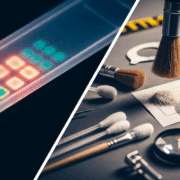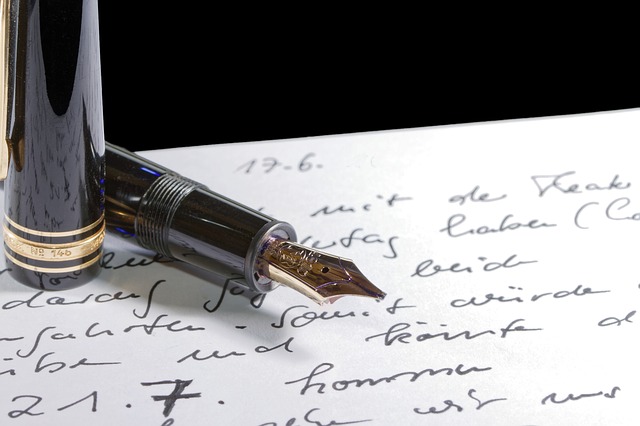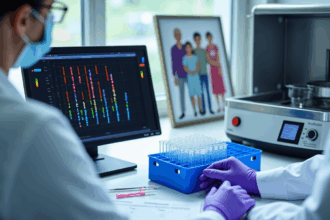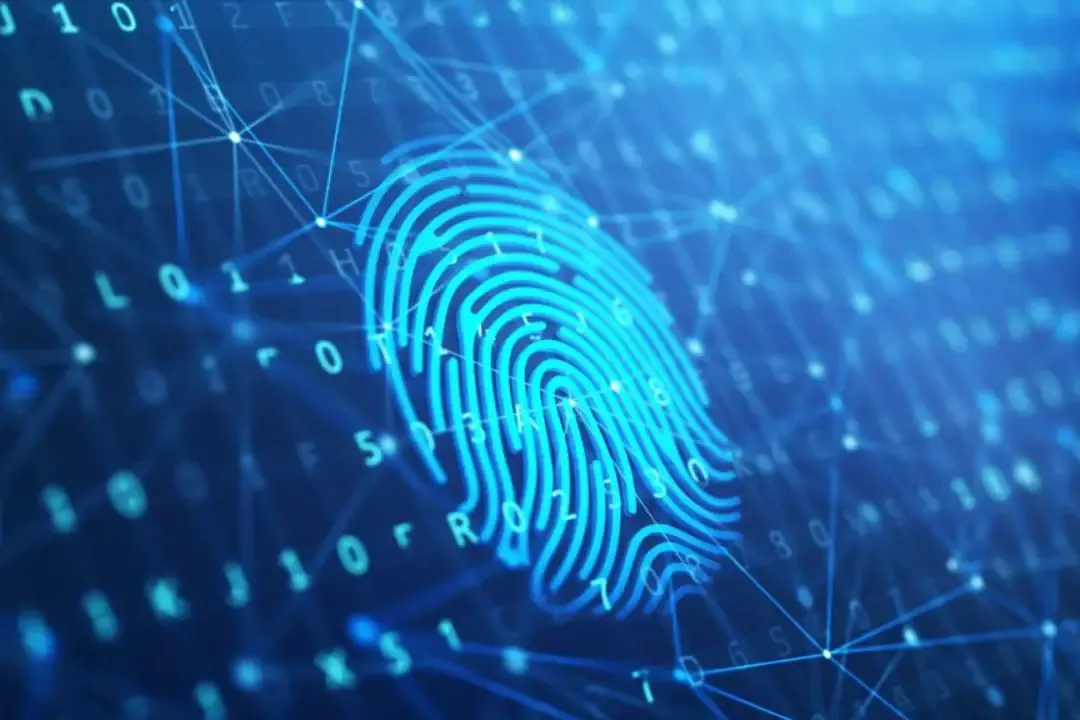Two distinct disciplines often cause confusion in the realm of handwriting analysis: forensic handwriting examination and graphology. While both involve scrutinizing the intricacies of penmanship, their purposes, methodologies, and applications diverge significantly. This comprehensive guide aims to elucidate the fundamental differences between these two fields, empowering you to make informed decisions when seeking expert assistance.
Graphology: The Study of Personality Through Penmanship

Graphology, derived from the Greek words “graphe” (writing) and “logos” (study), is a pseudoscientific practice that delves into the analysis of an individual’s handwriting to uncover their personality traits, emotional tendencies, and behavioral patterns. Proponents of graphology believe that as individuals learn to write, they unconsciously adapt the shapes, slants, and spacing of letters to align with their unique preferences and dispositions.
Graphological Principles and Applications
Graphologists meticulously examine various aspects of handwriting, including:
- Slants and Angles: The degree of slant in letters is believed to reveal traits like introversion, extroversion, or emotional tendencies.
- Spacing and Pressure: The spacing between words and the pressure applied while writing are interpreted as indicators of self-confidence, emotional stability, or social inclinations.
- Size and Proportion: The size and proportions of letters are thought to reflect characteristics such as ambition, ego, or attention to detail.
While graphology lacks scientific validationValidation, often referred to as method validation, is a crucial process in the laboratory when introducing a new machine, technology, or analytical technique. It involves a series of systematic steps and assessments to ensure that Read Full Definition, it has found applications in various domains, including:
- Recruitment and Corporate Training: Some organizations have allegedly utilized graphology to assess candidates’ personalities and identify strengths and weaknesses during hiring processes or employee development programs.
- Career Guidance: Graphologists claim to provide insights into an individual’s aptitudes and inclinations, aiding in career counseling and vocational guidance.
- Compatibility Assessments: Graphological analyses have been employed to evaluate the potential compatibility between individuals in personal or professional relationships.
It is crucial to note that the validity and reliability of graphological interpretations remain highly contested within the scientific community due to a lack of empirical evidence Evidence is any form of proof, such as objects, materials, or scientific findings, presented to establish or disprove a fact in a legal proceeding. It is used to reconstruct events and link or exclude individuals Read Full Definition and standardized methodologies.
Evidence is any form of proof, such as objects, materials, or scientific findings, presented to establish or disprove a fact in a legal proceeding. It is used to reconstruct events and link or exclude individuals Read Full Definition and standardized methodologies.
Forensic Handwriting Examination: The Science of Identifying Authorship
In contrast to graphology, forensic handwriting examination is a well-established discipline within the field of forensic science Discover the fascinating field of Forensic Science, the application of scientific principles to legal matters. This post delves into its many disciplines, from DNA analysis to crime scene investigation, its importance in the justice system, Read Full Definition. It is grounded in the principle that every individual’s handwriting possesses unique characteristics, akin to fingerprintsFingerprint, impression made by the papillary ridges on the ends of the fingers and thumbs. Fingerprints afford an infallible means of personal identification, because the ridge arrangement on every finger of every human being is Read Full Definition, that can be used to identify the author of a written document or signature.
Discover the fascinating field of Forensic Science, the application of scientific principles to legal matters. This post delves into its many disciplines, from DNA analysis to crime scene investigation, its importance in the justice system, Read Full Definition. It is grounded in the principle that every individual’s handwriting possesses unique characteristics, akin to fingerprintsFingerprint, impression made by the papillary ridges on the ends of the fingers and thumbs. Fingerprints afford an infallible means of personal identification, because the ridge arrangement on every finger of every human being is Read Full Definition, that can be used to identify the author of a written document or signature.
Forensic Handwriting Examination Processes and Applications
Forensic handwriting examiners employ a rigorous scientific approach, analyzing various aspects of handwriting, including:
- Letter Formation: Individual letters and numbers’ shapes, proportions, and construction are meticulously examined.
- Line Quality: Factors such as pen pressure, line thickness, and writing fluency are analyzed to detect patterns and inconsistencies.
- Formatting and Spacing: The arrangement of words, lines, and paragraphs is scrutinized for deviations or irregularities.
- Writing Habits: Idiosyncratic writing habits, such as letter connections, pen lifts, and stroke patterns, are studied to establish authorship.
Forensic handwriting examiners typically follow a structured process:
- Sample Collection: Multiple handwriting samples from the suspected author(s) and the questioned document are gathered for comparison.
- Preliminary Analysis: An initial examination is conducted to identify any obvious discrepancies or similarities.
- Detailed Comparison: The handwriting samples are compared side-by-side, focusing on various characteristics and patterns.
- Evaluation and Conclusion: Based on the analysis, a conclusion is drawn regarding the authorship or authenticity of the questioned document or signature.
Forensic handwriting examination plays a crucial role in various legal and investigative contexts, including:
- Forgery Detection: Identifying forged signatures, documents, or alterations in legal contracts, wills, or other important records.
- Criminal Investigations: Analyzing handwritten notes, letters, or other evidence to link suspects to criminal activities or establish alibis.
- Document AuthenticationVerifying the identity of a user, process, or device, often as a prerequisite to allowing access to resources in an information system. Read Full Definition: Verifying the authenticity of historical documents, manuscripts, or artworks based on handwriting analysis.
- Disputed Authorship: Resolving disputes over the authorship of literary works, letters, or other written materials.
Unlike graphology, forensic handwriting examination adheres to strict scientific principles, employing standardized methodologies and rigorous training programs for practitioners. Qualified forensic handwriting examiners often hold certifications from recognized organizations and undergo continuous proficiency testing to maintain their expertise.
The Fundamental Distinction: Science vs. Pseudoscience
While both graphology and forensic handwriting examination analyze handwriting characteristics, the fundamental distinction lies in their scientific validity and methodological rigor. Graphology is considered a pseudoscientific practice, lacking empirical evidence and standardized procedures. At the same time, forensic handwriting examination is a well-established branch of forensic science grounded in scientific principles and rigorous methodologies.
Forensic handwriting examiners undergo extensive training, adhere to strict protocols, and employ objective, quantifiable techniques to analyze handwriting samples. Their findings are based on measurable characteristics and are subject to peer review and scrutiny within the scientific community.
In contrast, graphology relies heavily on subjective interpretations and anecdotal evidence, with little to no scientific validation. Graphological assessments are often based on personal beliefs and interpretations, lacking standardized guidelines or quality controlQuality control (QC) refers to a series of activities and measures conducted on individual laboratory tests or analyses to verify and ensure the accuracy and reliability of the results. QC is a reactive approach that Read Full Definition measures.
It is crucial to recognize this fundamental distinction when seeking expert assistance in handwriting analysis. While graphology may offer intriguing insights into personality traits, it should not be relied upon for legal or investigative purposes. Conversely, forensic handwriting examination provides scientifically sound evidence and expert opinions that can withstand scrutiny in legal proceedings or critical investigations.
Navigating the Realm of Handwriting Analysis
When handwriting analysis is needed, it is essential to understand the differences between graphology and forensic handwriting examination. Confusing the two can lead to significant consequences, particularly in legal or investigative contexts where the accuracyIn scientific and measurement contexts, "accuracy" refers to the degree of proximity or closeness between a measured value and the true or actual value of the measured quantity. Accuracy indicates how well a measurement reflects Read Full Definition and reliability of evidence are paramount.
If you require a document or signature to be examined for authenticity, alterations, or forgery, it is advisable to seek the services of a qualified forensic handwriting examiner. These professionals possess the necessary expertise, training, and certifications to conduct thorough analyses and provide scientifically valid opinions that can withstand scrutiny in legal proceedings.
Conversely, graphology may offer intriguing insights if you are interested in exploring personality traits or seeking guidance in areas such as career counseling or compatibility assessments. However, it is crucial to approach graphological interpretations with a critical mindset and an understanding of their subjective and unproven nature.
In conclusion, while graphology and forensic handwriting examination share a common focus on handwriting analysis, their purposes, methodologies, and applications diverge significantly. By recognizing the fundamental distinction between these disciplines, you can make informed decisions and seek the appropriate expertise to address your specific needs, whether for legal, investigative, or personal purposes.













